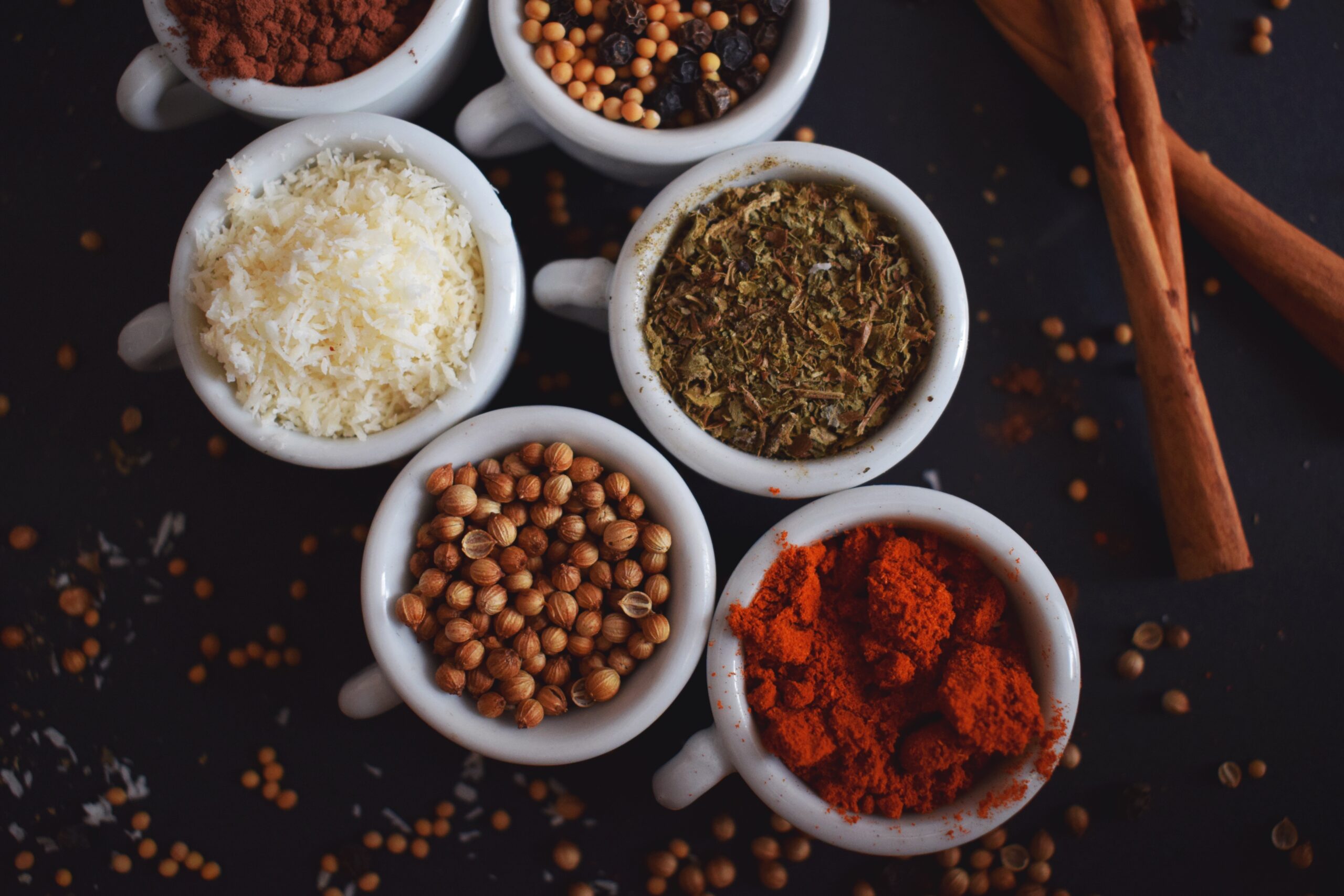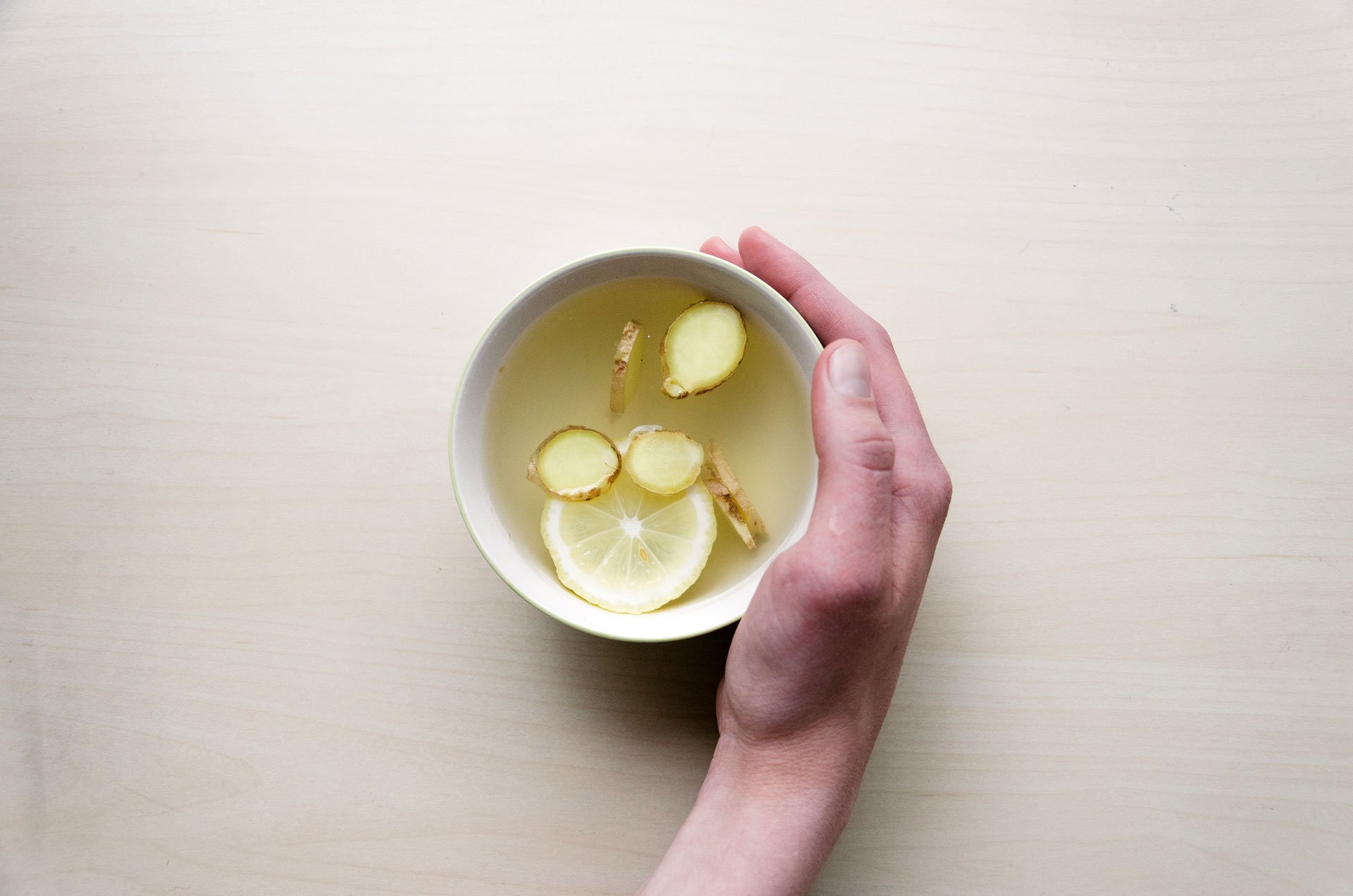Real Food Encyclopedia | Turmeric
Try to imagine Japanese curry without a rich, golden sauce. Or a tagine of chicken that hadn’t absorbed a warm yellow tint. That ingredient responsible for dyeing everything from cauliflower to your fingertips yellow-orange is turmeric (Curcuma longa), a quintessential seasoning in many cuisines. But so often found as a powder in the spice cabinet, turmeric is less understood than, say, ground mustard or cinnamon. Where does it come from? And how does it affect food, beyond its tint? And where has it been lurking before popping up, trendily, as the latest anti-inflammatory superfood?
Turmeric powder comes from a rhizome, or underground stem of a plant that resembles a root. The plant is a perennial herb in the zingiberaceae family, which also includes ginger. With striking flowers and tall, broad leaves, it may seem a surprise that turmeric plants are mostly cultivated for the gnarly bit hidden in the soil. But it has been for thousands of years, to serve many purposes, both culinary and medicinal.
Turmeric has been a player in traditional Chinese and Indian medicines (such as Ayurvedic) since ancient times. With a variety of health benefits, it has been used to help treat digestive problems, liver conditions and pain. It can be applied topically to treat wounds or skin conditions like eczema, or prevent the spread of infection. Turmeric also contains curcumin, a chemical compound with powerful anti-inflammatory and antioxidant properties. It also contains omega-3 and omega-6 fatty acids, which can help lower bad cholesterol levels, so its use to season meats and other rich foods, beyond flavor, helps balance their effects, too.
Did you know?
- In India, where it is believed that turmeric originated over 5,000 years ago, there are numerous ceremonies and rituals involving turmeric. The spice is often associated with prosperity and fertility, so weddings make good use of turmeric. In traditional Bengali weddings, for example, turmeric paste is applied to the bride’s skin by female friends to give it a glow. Turmeric-colored clothing is often worn by bridesmaids.
- It’s believed that Hawaii also has a long history with turmeric, and ancient Hawaiians used the root for medicinal purposes such as treating infections and ulcers.
- The word “turmeric” derives from its Latin name, terra merita, or “meritorious earth.” But in Sanskrit, turmeric has at least 53 different names.
What to look for when buying turmeric
Seasonality
In commercial production, turmeric is planted in the spring and harvested seven to nine months after planting. After it’s harvested and processed, turmeric rhizomes are relatively stable, and can be stored for up to one year without refrigeration. However, they’re considered best when purchased freshest, just after harvest in the winter. If not processed by curing and drying first, fresh turmeric can last a few weeks, much like fresh ginger root.
Cultivation
As a perennial, turmeric typically matures around August, when its flower is in full bloom. The rhizome is usually harvested once its leaves start browning and falling off the plant in autumn. These finger-shaped rhizomes can be extracted from the soil without disturbing the entire root to prevent the need for re-planting. In commercial production, the plants are dug up and the “mother” rhizomes are retained for replanting in the spring, while the “finger” rhizomes are harvested for use. These mother rhizomes produce higher yields than the fingers.
After harvesting, turmeric may be used fresh, much like ginger root. But more commonly, the rhizomes are processed into more shelf-stable dried or ground turmeric. This is done by boiling the rhizomes for about 45 minutes or until soft, which reduces its bitterness and spreads its color uniformly throughout. Afterward, it is dried thoroughly, before being ground finely.
India produces about 80 percent of the world’s turmeric, while other major producers include Pakistan, China, Haiti, Jamaica, Peru, Taiwan and Thailand.
Eating turmeric
Storing
Keep dried turmeric (either powdered or whole) in an airtight container in a dark place. Exposure to sunlight will weaken turmeric’s flavor as well as its hallmark color. It’s advised to use ground spices within a few months or up to one year for best flavor; if older, turmeric will still impart a bold yellow hue, but you may need to use more of the spice to achieve the same flavor. Fresh turmeric root can be stored in an airy, dry place at room temperature for about two weeks before it begins to dry and decompose; the fresh roots can also be frozen for months and thawed before use.
Cooking
Because of its slight bitterness, turmeric is often paired with a subtle sweetening agent, such as honey, in cooking. To see if you like the flavor of turmeric, just try it simply in warm milk (or soymilk, almond milk or coconut milk) with a little honey stirred in. Or try this anti-inflammatory turmeric tea. And instead of buying pre-blended spice mixes, stock up on individual canisters of spices like turmeric, cinnamon, ground mustard, cumin, etc. and make your own blend, adjusting the amounts of each to taste. If you’re looking for a bit more color in baked goods like cakes, cookies or breads, just add a pinch of turmeric to the dough to give it a sunny glow.
Nutrition
Turmeric is linked to so many health benefits, from Ayurvedic traditions to the latest nutrition crazes. In addition to the antioxidant and anti-inflammatory effects known from ancient times, turmeric contains numerous essential minerals and phytonutrients. These include fiber, calcium, potassium, iron, manganese, copper and zinc. It’s also rich in Vitamin B6 and Vitamin C, especially if eaten as a fresh root. Even dried, however, turmeric is among one of the top spices in terms of antioxidant strength.
Because antioxidants boost the immune system and prevent against ailments, some even suggest taking turmeric supplements. Scientists have studied turmeric’s role in preventing cancers, such as breast cancer, while other studies indicate that curcumin (found naturally in turmeric) can help treat forms of cancer. Further, the anti-inflammatory effects of turmeric can provide relief against chronic pains and conditions such as arthritis.
In traditional medicines, turmeric is associated with a warming and stimulating effect on the body. Like ginger, it’s believed to be especially helpful in winter, or for those who are feeling a bit weak. Instead of an elaborate curry, a simple turmeric milk can be made for quick absorption at nighttime, to aid digestion and warm the body before sleep.


